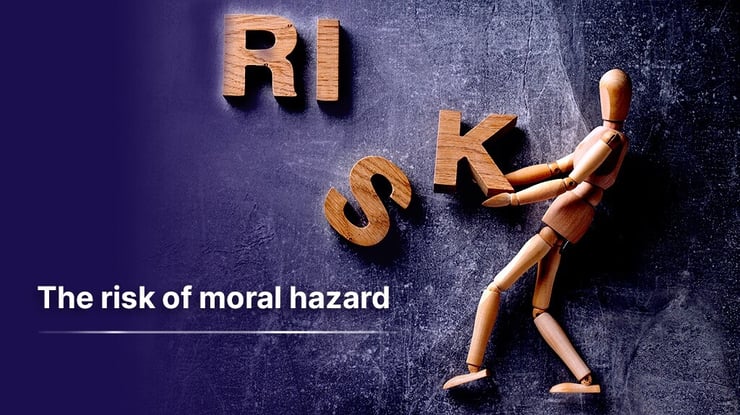Chasing fraudulent insurance claims can feel a lot like a crime noir drama. There's mystery, intrigue, and hours of investigation that go into tracking down every detail to detect bad actors. It's no surprise that many fraudulent claims go undetected due to the prohibitive cost of an investigation.
Fraud monitoring has come a long way since the roaring 20's. Through the use of intelligent automation tools, Special Investigations Unit Software, and streamlined processes, fraud detection is no longer the adventure it once was. In fact, the majority of cases are cracked with a fraction of the resources teams once deployed to prevent fraud. FRISS concluded in the 2022 Insurance Fraud Report that 62% of fraud monitoring teams have implemented technology solutions, with 42% relying on predictive models and AI. These tools are saving time and costs, while seeing better accuracy than past methods of fraud monitoring.
So where does this leave the plot? With more capacity to pursue claims that were previously thought to be too cost prohibitive. These 5 common fraudulent cases can now be cracked with the use of intelligent fraud monitoring tools.
1. Worker's Comp Claims
Worker's compensation claims have a long history of being among the most costly fraud cases to pursue. AI-powered social media investigations have evolved alongside common worker's comp scams to build curated facts and evidence that protect consumers and businesses. OSINT -- or Open-Source Intelligence -- is a primary tool for Social Media Detection that leverages publicly available data to answer specific questions.
What this means for worker's comp fraud is that minor fraudulent activity and inflated claims can now be tracked as easily as claims with large monetary stakes or obvious red flags. OSINT removes tedious hours of investigation time by automating the process with AI technology that flags and aggregates relevant content.
If a claimant has been injured on the job, for example, the legitimacy of the injury can be verified via social media investigations. OSINT technology solutions pull photographic evidence, location tags, and timelines via voluntarily disclosed social media posts, blogs, articles, and other information. Available public data can also record whether or not a claimant is working at an undisclosed job while fraudulently attempting to claim benefits. In the case of a worker's comp claim, these details can be the key to detecting and preventing fraud. Over time, more small-scale claims are processed which results in money saved from previously overlooked scams.
Evolving technology automation is making it easier to protect businesses from fraudulent activity on both a large and small scale.
2. Auto Insurance Claims
Was it a freeway exit ramp collision or a drag race dust-up? It may be surprising to learn that a GoPro was the sleuth who solved a $61,465 fraudulent auto insurance claim involving a Corvette Stingray in this exact scenario. While the vehicle owner initially reported totaling the car while exiting off the I-90 ramp near Wild Horse Pass in Chandler, AZ, subsequent GoPro footage posted to YouTube showed the exact vehicle engaging in risky behavior during a drag race -- a circumstance that is certainly not insured by the carrier, Geico. The driver's reckless actions ultimately totaled the vehicle, which was then the subject of a fraudulent auto insurance claim.
Like many auto claims, such a story would previously have been thought of as too complex to pursue. Thanks to the power of digital detective work, auto insurance fraud prevention is gaining an edge over bad actors. Social Media Detection that goes beyond the surface-level details to collect and aggregate data from different devices has proven invaluable in catching frauds and keeping the market fair and equitable for consumers.

3. Hit and Run Claims
DUI's, uninsured motorists, hit and run's -- these claims are among the top fraud investigations that no team wants to deal with. They're costly, time-consuming, and defined by a lack of evidence surrounding the events. Special Investigations Unit Software is streamlining the way teams approach murky claims. Much like the case of the dishonest drag racer, fraud prevention units can now pull data from different devices in order to assess fraud. Traffic cams, public video uploads via platforms like YouTube and TikTok, and local area footage can expedite claims validation. Rather than spending valuable time and resources searching through every source, social media investigations tools use OSINT to answer targeted questions relating to specific dates, times, and criteria, then deliver those sources directly to fraud monitoring teams.
4. Property and Casualty Claims
Predictive modeling is on the rise when it comes to preventing property and casualty claims fraud. The SaS State Of Insurance Technology Study revealed that a significant 88% of surveyed insurers have automated fraud detection, with 80% of insurers having already incorporated predictive modeling into their strategies. In essence, predictive modeling looks at past trends and behaviors to determine likely markers of fraud in future claims.
For the property and casualty insurance industry, this exciting new technology has accelerated fraud prevention that might have been historically overlooked. One area that carriers are leveraging predictive modeling in is claims inflation. Data-backed forecasting identifies specific damages that are prone to inflation and further pairs down the likelihood of fraud by circumstantial factors that contribute to faulty claims. This puts carriers and consumers back in control of often expensive property and casualty claims.
5. Healthcare Claims
Healthcare claims are among the most complex fraud reports teams struggle to prevent. Of these, billing fraud is a highly common tactic wherein an incorrect service is billed for a higher payout. Leveraging OSINT is empowering fraud monitoring professionals in fact-checking these claims. If contradictory online evidence surfaces -- especially regarding the date of a billed procedure or clues that a procedure was not performed -- a fraud case can be flagged with reasonable certainty. Consider the power of Social Media Detection in cases where a costly procedure, such as surgery, was billed, yet the evidence was posted to Facebook of the alleged patient driving the same day of the procedure. These indisputable leads include timestamps and corroborating data to settle suspicious claims easily and keep fraudulent activity out of the healthcare system.
Gone are the days of hardboiled insurance scheme dramas. Modern technology has given fraud monitoring teams a significant advantage in detecting and preventing claims scams. Discover the difference intelligent fraud solutions can offer with a complimentary demo of PilotBird's elite fraud detection toolkit.
REFERENCES
- FRISS, Insurance Fraud Report 2022, (FRISS, 2022).
- Rosalie L. Donlon, GoPro video leads to conviction of auto insurance fraud suspect, (PC, 2017).
- SaS, 2021 State of Insurance Fraud Technology, (SaS, 2021).
- U.S. Attorney General, Types of Insurance Fraud, (Attorney General, 2023).




Leave a Comment
Your email address will not be published. Required fields are marked *